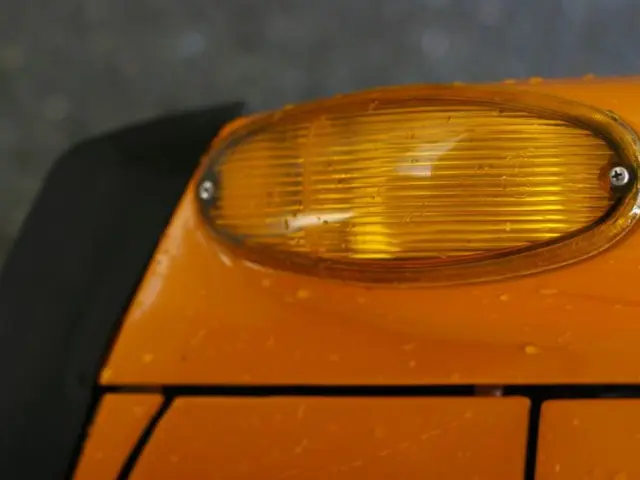Surgical Intervention, Healing Process, and Alternative Methods for Bunion Elimination
In the realm of foot surgery, bunion removal has undergone significant advancements, with minimally invasive procedures becoming increasingly popular. These modern techniques offer a more comfortable and speedier recovery compared to traditional open surgery.
Several types of bunion surgery are available, each with its unique procedures, recovery timelines, and potential alternatives. The choice of surgery depends on the severity of the bunion, patient health, age, and activity level.
### 1. Minimally Invasive Bunion Surgeries
Two prominent minimally invasive procedures are the PECA (Percutaneous Chevron Akin) Procedure and the Minimally Invasive Lapidus Procedure.
The PECA Procedure involves small cuts to the first metatarsal bone (chevron osteotomy) and the big toe bone (Akin osteotomy) to realign the toe. Ideal for mild to moderate bunions, this method offers immediate weight bearing after 24 hours, a return to normal shoes by six weeks, and full activity in eight to ten weeks. Its advantages include small incisions, minimal pain, quick weight bearing, and barely visible scarring.
The Minimally Invasive Lapidus Procedure is used for severe or unstable bunions. This surgery fuses the joint between the first metatarsal and the medial cuneiform bones, correcting big toe alignment powerfully. Weight bearing begins two to four weeks post-op, with a return to normal shoes at eight weeks and full activity at ten to twelve weeks. Benefits include smaller incisions, less pain, and a lower infection risk compared to traditional open surgery.
### 2. Traditional Open Surgery
Traditional open surgery involves a larger incision (three to five inches) to directly remove the bony enlargement and realign bones. This method may include bone cuts, realignment, joint surface repair, sesamoid repositioning, or fusion, depending on the deformity. Recovery requires six to eight weeks with crutches, often partial or no weight bearing initially. This approach may result in more swelling, pain, and visible scarring.
### 3. Other Surgical Types
Other surgical types include bunionectomy (removal of the bony prominence for painful bunions), surgical fusion (to realign bones and stabilise severe deformities), and neuropathy decompression (surgery to relieve nerve pain due to bunions).
---
### Recovery Processes Summary
| Surgery Type | Weight Bearing | Return to Normal Shoes | Full Activity | Scarring & Pain | |------------------------------|-------------------------|-----------------------|---------------------|---------------------------------| | Minimally Invasive PECA | Immediate after 24 hrs | ~6 weeks | 8-10 weeks | Minimal, small puncture marks | | Minimally Invasive Lapidus | 2-4 weeks post-op | ~8 weeks | 10-12 weeks | Minimal, small puncture marks | | Traditional Open Surgery | 2-6 weeks non-weight bearing | 10-12 weeks | 12+ weeks | Larger scars, more pain/swelling|
---
### Potential Alternatives to Surgery
Non-surgical treatments, such as orthotic devices, toe spacers, footwear modifications, physical therapy, and anti-inflammatory medications, can help manage symptoms but do not correct the deformity. Surgery is considered when symptoms are severe, progressive, or conservative management fails to provide relief.
In conclusion, minimally invasive bunion surgeries like PECA and Lapidus offer smaller incisions, faster recovery, and less pain compared to traditional open surgery, which remains an option for complex or severe deformities. The patient’s condition and surgeon’s recommendation guide the best approach. Non-surgical methods help manage symptoms but do not correct the bunion deformity itself.
Most people can go home a few hours after bunion surgery, but they should organise transport home before going to the hospital as they should not drive themselves after general anesthesia.
- The PECA Procedure, a minimally invasive bunion surgery, involves making small cuts to realign the first metatarsal and big toe bones, providing quick weight bearing, and offering a return to normal shoes in six weeks.
- The Minimally Invasive Lapidus Procedure, used for severe bunions, fuses the first metatarsal and medial cuneiform bones, ensuring a powerful correction while offering minimal pain and less infection risk compared to traditional open surgery.
- Traditional open bunion surgery, with its large incision, can take six to eight weeks to recover, may result in more swelling, pain, and visible scarring.
- Other bunion surgeries include the bunionectomy, surgical fusion, and neuropathy decompression, designed to address various aspects of the deformity.
- Recovery timelines can vary depending on the surgery type, with weigh bearing starting as soon as 24 hours for minimally invasive PECA, two to four weeks for Minimally Invasive Lapidus, and non-weight bearing for two to six weeks after traditional open surgery.
- In the realm of health and wellness, proper foot health plays a crucial role, particularly in the workplace, where chronic conditions like bunions can develop due to prolonged standing or high-impact activities.
- Apart from bunions, other medical conditions like chronic diseases (such as chronic kidney disease and cancer), respiratory conditions, eye health issues, skin care concerns, mental health problems, and cardiovascular health matters need attention for a holistic approach to overall health and wellness.
- Maintaining fitness and exercise, following a balanced nutrition plan, and seeking appropriate therapies and treatments are integral components of managing chronic diseases and promoting overall health.
- Incorporating sports and regular exercise into one's routine can help prevent and manage various health concerns, from chronic diseases to mental health issues, while also improving eye health, skin care, and cardiovascular health.




